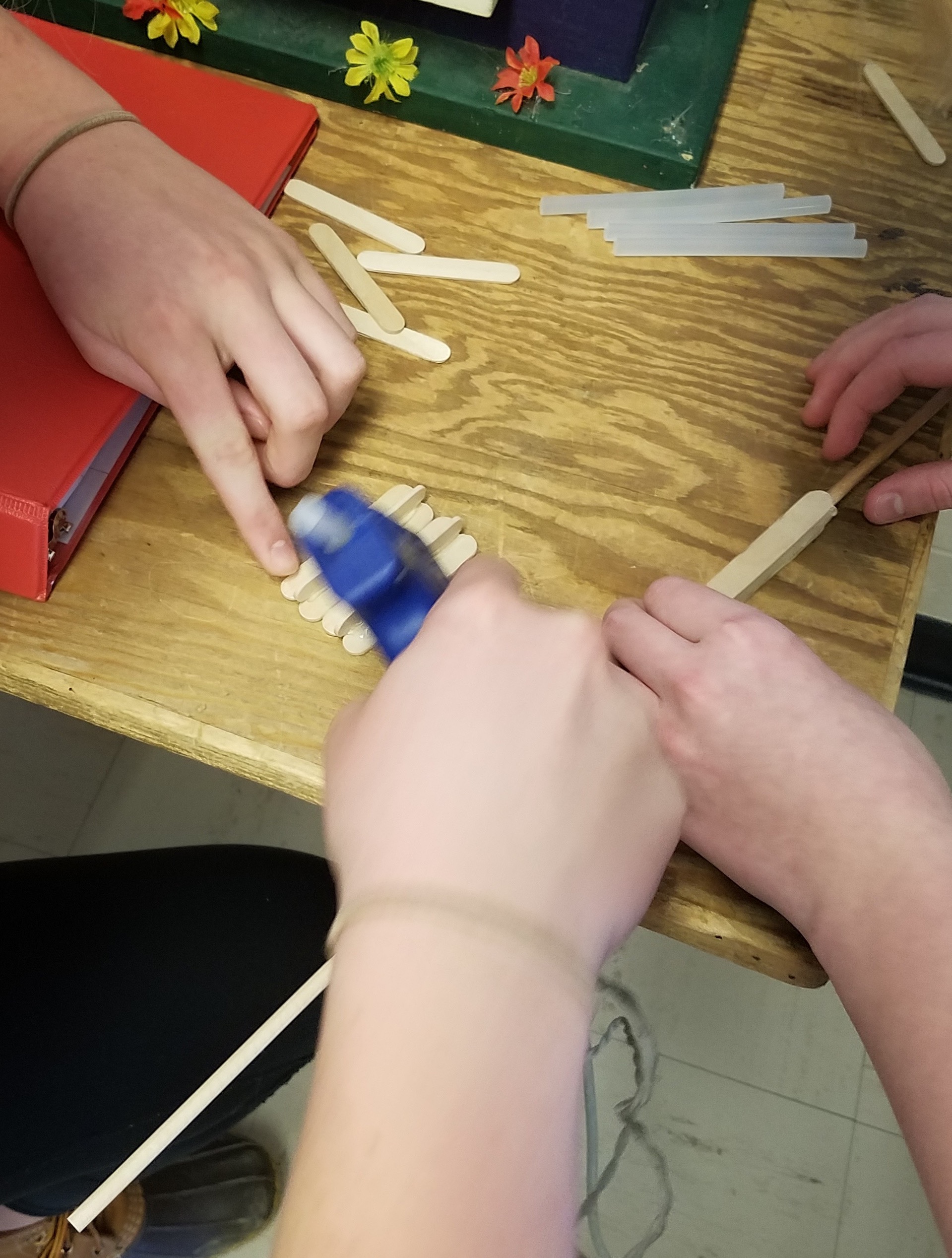Project Based Learning is a buzz word. It really is. Everyone has their own idea of what it is and how to do it. However, I believe there are a lot of different ways to implement this strategy, depending on what you want to accomplish, what kind of setting and resources you have, the climate and size of your classroom and school, and so much more. I believe you can get the same benefits in a variety of different ways, so in this post, I’d like to outline some of the different ways to implement PBL in a classroom.
- The Extended Project
– Usually a team environment
– Entirely student directed
– Significant planning and collaboration beforehand
– Public display of results
– Collaborative environment
– Varying results every time
This form of project based learning is the most difficult. It requires a team of educators working together to design the constraints on an extended project including explicit grading rubrics and expectations. Students are either given a concept to research and solve a problem with, or students are asked to come up with their own idea to research and educators guide students through the process and supplement their idea with classroom content. This type of PBL also usually involves some type of public display of results to the whole school, family and friends, sometimes even the community. Proponents of this form of project based learning believe it is crucial to have this piece as a way of getting the students invested in the project and keeping them accountable. I worked at a school once who did this in a sort of “shark tank” inspired community presentation.
Own Idea Research Project:
The later form of this, the research project, is very similar to the standard research project. Usually it spans the full timeframe of a course (year or semester) and each class period dedicates time to working directly on the research project, and time on content lessons. In project based learning applications, usually one research project covers several content areas, rather than having one research topic per content area, and the end product includes a presentation of some kind, a model or product to display, as well as the typical research paper. This form of extended project lends its self toward individual projects, and the learning outcomes it meets will likely vary from student to student.
Concept Specific Research Project:
This type of extended project gives the students a little more structure and is designed around shared units. For instance, a group of educators across different content areas may come together and plan a unit on sustainable practices. Typically there are 3-4 units in a school year, but your school or group of educators can decide on that. During this blended unit students will be asked to research a topic or problem specific to sustainability. Perhaps they will try to design better drainage or runoff water collection and containment systems, perhaps they will design a rooftop garden, or maybe research fuel efficiency. In this kind of set-up, students choose a problem to solve within the confines of the content they will be learning about. There are usually set learning objectives all students are expected to meet, in addition to student chosen objectives, and they are often group projects in which students are expected to collaborate with their peers.
The “Buck Institute for Education” is considered a leader in this type of project based learning and they have many resources available for training educators on their site.
These next few ways of implementing project based learning are smaller more supplemental ways to incorporate the principles and methods into a regular classroom setting, or if you are working with a resistant administration or group of students. While the full collaborative, cross-curricular project may be the most comprehensive method, it is simply not feasible for everyone, and smaller more manageable methods are needed. All of these methods include elements of what The Extended Project tries to accomplish.
In these types of smaller tasks it is crucial to ask probing questions. This isn’t just completing a task to find an answer, we are looking for the WHY; the “what happened?”, “Why did this happen”, “did we expect that to happen?”. These kinds of probing questions are what really implement the higher order thinking skills and get the most value out of the project. Several of these project based learning activities can be used within the same unit or throughout the year, depending on what you can fit into your curriculum.
The primary goal of any project based approach, is to have students engage with what they are learning in tangible, real-world ways that are interesting to them and/or valuable to their everyday lives. It includes problem solving, observation, experimenting, analyzing, critiquing, applying, and revising.
2. The Learning Lab (Observation, Experimentation, analysis, application)
– Shorter time periods (1 class period up to a whole unit)
– More structured environment
– Class or school wide results (sometimes shared out)
– Student centered, but Teacher facilitated
– Repeatable
– Expected range of results
Learning lab project based activities are reminiscent of science labs (and sometimes actually do include science experiments! Win!) and can be anywhere from one class period long, to an entire unit. In this case, “unit” might be considered synonymous with “chapter”. A project may last the entire unit on exponential growth for instance. I once had my algebra 2 class grow mold during our unit on exponential functions. They set up the experiment, observed and recorded the progress, then used the data they gathered to understand what happened. These type of tasks can also be used to observe a concept or phenomenon BEFORE you give instruction on it, as a way to peak students interest and engagement.
3. The Prompt (Problem solving, analysis, critique, application, revision)
– Shorter time periods (Anywhere from about 1-7 class periods)
– More structure
– More student choice than The Learning Lab
– Student centered but Teacher facilitated
– Repeatable prompt, but varied outcomes.
– Expected range of results
– Class or school-wide results
The Prompt is a project based task that poses a question or problem to the student to solve. Usually it is centered around the unit concept, but there is more room for student choice in HOW the project will be accomplished. For instance, in my geometry class, I asked students to create a set of 3-dimensional canisters to hold whatever dry goods they wanted. I provided some examples to choose from (rice, flour, beans, etc..) and asked students to design a set of 3 different shaped canisters that could hold at least 1 package of their dry goods (because there’s always that one kid who wants to do as little work as they can get away with). The students were not limited to what I provided, and were free to use whatever shapes and materials they wanted to create these canisters. When they completed them, they presented their results to their peers and the canisters were on display in my room. This was given during a unit on volume and surface area, which the students needed to use in order to design and create their canisters.
4. The Application Task (Problem solving, analysis, critique, application, revision)
– Shorter time periods
– Most structured
– Repeatable
– Expected results (With some possible variation)
– Student centered, but Teacher facilitated
The Application Task, is a method of project based learning that looks at the smaller real-world applications of what students are learning. They are typically very short tasks or activities, either for the whole class, or for individual work, that can be as short as 5-10 minutes, or as long as a couple of class periods. This could include, for example, a class activity analyzing linear data for the line of best fit and what that means. It could be a starter question that encourages students to apply what they know to find an error or come up with a hypothesis. For instance, when starting a unit on triangles, you may ask students to create a triangle with a set of sides that will never produce a closed triangle. After students have struggled to figure it out, you can discuss why these side lengths might not produce a triangle. I have had great success with these sorts of activities in introducing topics or solidifying a concept. They are easy to implement, engage the students in applying what they are learning, and get the teacher walking around the classroom to facilitate, ask and answer questions, and guide the student discovery.
No matter what kind of project based learning best suits your teaching style, curriculum, school climate, resources or students, you can still engage students in applying and utilizing what they know in engaging, meaningful ways that meet desired learning objectives, get students problem solving and using higher order thinking skills, and integrate cross-curricular content to give students a deeper and wider understanding of concepts and what those concepts can help them with in “real life”. I particularly like these smaller methods of implementing project based learning, because it enables me to expose students to several different applications of the material. I feel learning is only useful if you know what it can do for you. Shorter project based learning activities allow students to experience several different uses within one unit.
At the end of the day, the goal of project based learning is ultimately to solve real world problems with integrated cross-curricular content knowledge and problem solving. HOW you get students to that point is up to you.



2 thoughts on “4 Types of Project Based Learning in the Classroom”